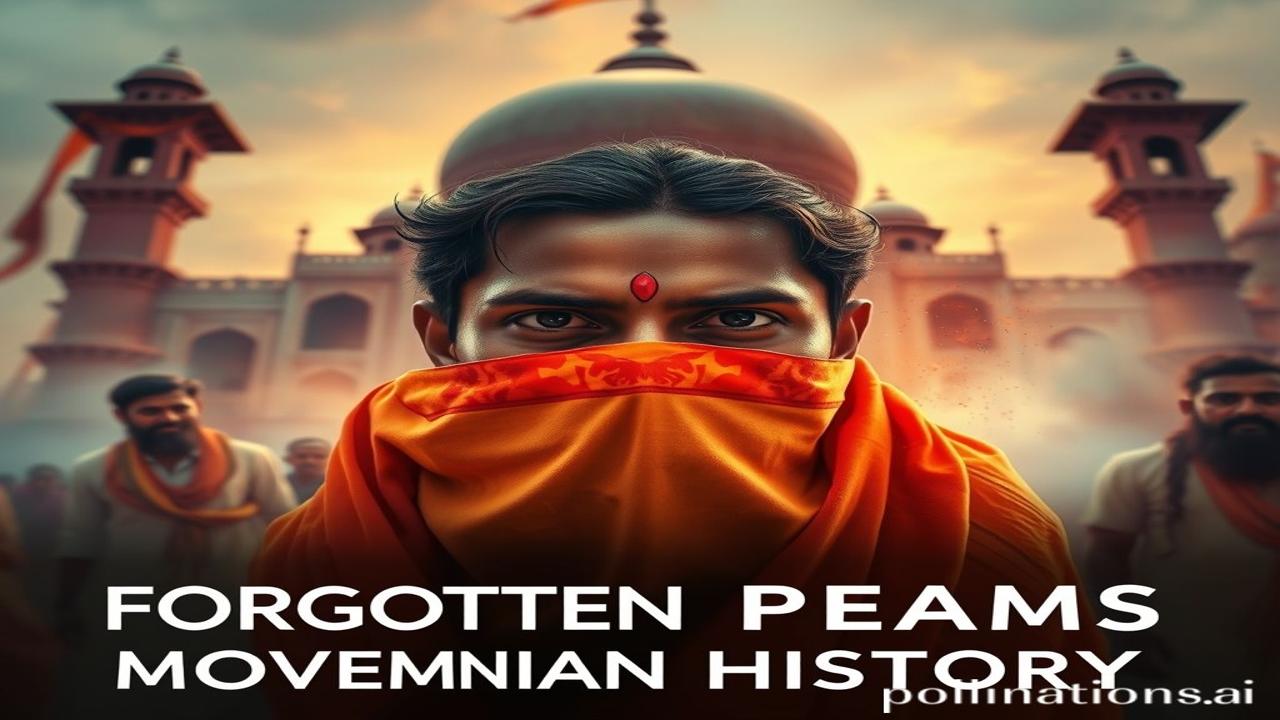Waqt Ke Panno Mein Dhool Chhupi, Aman Ki Kahaniyan: Forgotten Peace Movements in Indian History
Kabhi kabhi, jab hum apne itihaas ke panno ko palatte hain, toh unme se kuch kahaniyan dhool mein chhup jaati hain. Yeh kahaniyan, jang aur yudh ki garjan ke beech, shanti ki ek madhur dhun lekar aati hain. Aaj, hum unhi bhooli-bisri aman andolan ki taraf dekhenge, jo Bharat ki mitti se nikli, aur jinka asar aaj bhi humare dilon mein basa hai. Imagine, the scent of sandalwood mingling with earth after the monsoon, echoing with chants of peace in a world often obsessed with conflict. Aisi hi kuch kahaniyan aaj hum saath lekar chalenge.
Itihaas Ka Panna: Forgotten Peace Movements – Kya, Kab, Aur Kyun?
India’s history is often painted with the colors of battles and empires. But beneath this vibrant tapestry lies a subtle thread of peace movements, quietly weaving through the centuries. From the Buddhist teachings of non-violence in ancient times to the Gandhian philosophy of Satyagraha in the 20th century, these movements, though often overlooked, have profoundly shaped our society and values.
These were not just isolated incidents. They were sustained efforts, often led by ordinary people, to challenge oppressive systems, resolve conflicts peacefully, and promote social harmony. Think about the Jain concept of Ahimsa, originating around the 6th century BCE, emphasizing non-violence towards all living beings. Or consider the Bhakti movement of the medieval period, which preached love and devotion as paths to spiritual liberation, transcending caste and religious divisions.
These movements are important because they demonstrate that peace and non-violence have always been a part of the Indian ethos. They remind us that even in the face of immense challenges, there is always an alternative to violence and hatred. They give us hope that a more peaceful and just world is possible.
Zameeni Sach: Logo’n Ka Jeevan, Aman Ka Sapna
Let’s try to imagine the daily life during the Bhakti movement. Ma Rukmini, a simple village woman, would start her day by singing devotional songs in her local language, maybe Marathi or Hindi. Her songs spoke of love for Krishna, of equality, and of rejecting ritualistic dogma. Imagine the vibrant colours of her lehenga choli, the aroma of incense as she offered prayers, and the collective singing filling the air with hope.
Meanwhile, in the courts of emperors, rulers like Ashoka, after the devastating Kalinga War (around 261 BCE), embraced Buddhism and dedicated themselves to peaceful governance and social welfare. He built hospitals for animals, promoted vegetarianism, and sent missionaries to spread the message of peace and non-violence across Asia.
The tools of these peace movements were not swords or guns, but ideas, words, and actions. Stories, poems, songs, and even silent protests became weapons of change. People from all walks of life—rulers, artisans, saints, farmers—participated, driven by a shared desire for a better, more peaceful world.
Dharohar Aur Pehchaan: Aaj Ke Bharat Mein
Today, the echoes of these forgotten peace movements resonate in various aspects of Indian culture and identity. The principles of Ahimsa are enshrined in our constitution and continue to inspire social activists and environmental movements. The spirit of interfaith harmony promoted by the Bhakti saints finds expression in our diverse religious landscape.
Gandhi’s philosophy of Satyagraha, a direct descendant of these earlier traditions, remains a potent force for social change, inspiring movements for justice and equality around the world. We see its presence in peaceful protests, civil disobedience campaigns, and even in our everyday interactions, where we strive to resolve conflicts amicably. This sense of Bharatiyata – an inherent belief in peace, tolerance, and harmony – has become an integral part of our national identity.
Majedar Tathya Ya Bhram-Bhanjak: Kuch Anjaane Sach
Log samajhte hain ki Mahatma Gandhi ne hi shanti ka marg dikhaya, lekin asli sach yeh hai ki Gandhi ji ke aane se pehle bhi, Bharat mein kayi shanti andolan hue. He built upon the legacy of centuries of non-violent resistance.
Shocking truth: Many emperors after Ashoka adopted policies of peaceful co-existence with neighboring kingdoms, prioritizing trade and diplomacy over warfare. This period, though less discussed in history books, saw a flowering of art, culture, and prosperity.
Drishya Aur Bhavanaayein: Indriyon Se Itihaas
Imagine walking through the ancient ruins of Sanchi Stupa, a Buddhist monument commissioned by Emperor Ashoka. The air is thick with the scent of rain-soaked earth and the faint fragrance of incense. The temple walls, carved with scenes from the Buddha’s life, feel cool and smooth to the touch. The sounds of birds chirping and the gentle rustling of leaves create a sense of tranquility and peace. This place, a testament to Ashoka’s commitment to non-violence, whispers tales of a forgotten era when peace reigned supreme.
Antim Vichar Ya Uddharan: Ek Shanti Ka Sandesh
“Ahimsa Paramo Dharma.” – Non-violence is the highest virtue. This ancient saying encapsulates the essence of India’s forgotten peace movements. May we remember these stories and strive to create a world where peace prevails over violence, and compassion triumphs over hatred. Kyunki, shaanti ki ek chhoti si koshish bhi, duniya ko badal sakti hai.
